New England is dotted with famous writers houses, a testament to the Puritan ideal of literacy and the region’s many publishing houses.
Some writers, like Rudyard Kipling, were born elsewhere, but wrote prolifically while living in New England. Some, like Robert Frost, made use of their surroundings in their work.
It wasn’t easy to select just six writers houses, one for each state. Some are blindingly obvious, while others may surprise you. All can be visited.
If you know of writers houses worth mentioning, please share them in the comments section.
Mark Twain House
Hartford had the highest per-capita income in the United States in 1871 when newlyweds Mark Twain (Samuel Clemens) and his wife Olivia moved there to be near his publisher.
Of Hartford, Mark Twain said, “Of all the beautiful towns it has been my fortune to see, this is the chief… You do not know what beauty is if you have not been here.”
In 1873, Twain began building the house described as ‘part Mississippi steamboat, part medieval fortress, part cuckoo clock.’ He lived in the lavish, Gothic Revival mansion for 17 years, the happiest of his life. It was in that house that he wrote The Adventures of Huckleberry Finn, The Adventures of Tom Sawyer and A Connecticut Yankee in King Arthur’s Court.
He also socialized with the many authors who lived nearby, including Harriet Beecher Stowe, William Dean Howells and Thomas Bailey Aldrich.
Twain made some bad investments and in 1891 moved to Europe where the cost of living was cheaper. He lost more money in 1893 and went on the lecture circuit to earn it back. “The lack of money is the root of all evil,” he wrote.
Daughter Susy died in 1896, and the Clemens couldn’t bear to return to the house. After it was sold, it became a library, an apartment house and a school. The house was going to be torn down, but preservationists saved it in 1929.
The Mark Twain House is now a museum open to visitors.
351 Farmington Ave., Hartford.
Wadsworth-Longfellow House
Henry Wadsworth Longfellow, like most Mainers, knew a good story when he heard one. And while his poems have been criticized for pandering to popular sentiment, they were never boring.
Longfellow’s best known home is probably in Cambridge, Mass. There he lived in the same house Gen. George Washington had headquartered while commanding the Continental Army.
The Wadsworth-Longfellow House in Portland, Maine, can lay greater claim to inspiring Longfellow. Portland was where he was born and grew up before heading off to Bowdoin College. And it was where he first would have heard many of the stories that he later immortalized in his poems about New England figures such as Miles Standish and Paul Revere.
Today the house is open as a museum in the heart of Portland.
489 Congress St, Portland.
The Homestead
It isn’t easy to select just one of Massachusetts’ many writers houses, but we chose the one the author rarely left: Emily Dickinson’s The Homestead in Amherst, Mass.
The Homestead was built in 1813 by Emily’s grandfather, Samuel Fowler Dickinson. He lost his money and sold the house, but his eldest son Edward bought half of it back in 1830. Emily was born in The Homestead on Dec. 10, 1830.
Edward Dickinson had his own money troubles. He sold his share of the Homestead and moved his family away for 15 years. By 1855 he had earned enough to buy back the whole house. In 1856, Edward began building The Evergreens next door as a wedding gift to his son Austin.
Emily became increasingly reclusive and started to communicate with visitors through closed doors, though she tended the flower garden and visited her brother next door. After she died in 1886, her sister Lavinia found her poems in a locked chest. Austin’s mistress, Mabel Loomis Todd, along with family friend Thomas Wentworth Higginson, edited Emily’s poems and took them to a publisher.
Emily Dickinson’s house was home to Lavinia until she died in 1899. Eventually it was sold to the trustees of Amherst College and used for college housing. In 2003, it was combined with The Evergreens as the Emily Dickinson Museum.
Visitors can take guided or self-guided tours through the Emily Dickinson Museum from April through December.
280 Main Street, Amherst, Mass.
Robert Frost Farm
Travelers passing through Derry, N.H., can be forgiven for looking at the passing countryside and wondering, ‘Whose woods are these? I think I know.’ For they may be looking at the Robert Frost Farm.
New Hampshire’s most famous poet lived on his farm in Derry from 1900 to 1911. The farm was a gift of Frost’s father, and the young poet struggled financially while he lived there. He began building a reputation, working the farm by day, writing by night and teaching at nearby Pinkerton Academy.
Frost, it turned out, was a horrible farmer but a wonderful poet. His Derry years shaped many of the works that would later win him fame for their crisp depictions of the New England spirit.
Frost famously read his work at the inauguration of John F. Kennedy and would die at age 88 before the president was assassinated.
The Frost Farm is now open to visitors who may walk the grounds. They can wonder which tree was the inspiration for Tree at My Window and scores of other poems that Frost wrote during his time in New Hampshire.
122 Rockingham Rd, Derry, N.H.
Fort Adams State Park
It’s easy imagine that Newport in its heyday might form a lasting impression on a teenage boy arriving in the city from the west, out for the first time on his own.
That certainly was the case with playwright and novelist Thornton Wilder. Wilder bunked in the barracks at Fort Adams, serving for three months in the Coastal Artillery Corps, before he headed off to college and on to a successful career.
The plays Our Town and The Skin of Our Teeth earned Wilder Pulitzer Prizes, and his novel The Bridge of San Luis Rey won the National Book Award.
For his final novel, Wilder let his mind wander back to 1926 Newport. Theophilius North was his last novel. It chronicled the whimsical adventures of a young man navigating through all strata of Newport society, solving problems for others along the way. Humorous and light, critics praised Wilder’s ability to retain a positive outlook even as his life was winding down.
Wilder would die two years later at his home in Hampden, Conn.
Fort Adams, where he had his short Rhode Island stay, is part of Fort Adams State Park at the mouth of Newport Harbor.
90 Fort Adams Drive, Newport, R.I.
Naulakha
Rudyard Kipling wrote some of his best work while living in Dummerston, Vt.: Captains Courageous, the Jungle Books and a book of poetry that included Gunga Din and Mandalay.
Why Vermont for the British-Indian writer? He loved the fall foliage, the snow and the sound of sleigh bells, and his new wife Caroline Balestier had grown up in Vermont. In 1893, they built a South Asian Indian bungalow in the American Shingle style next to her brother’s home. They called it Naulakha after a book he wrote about a precious Indian jewel. .
The house, which is only one room deep, has views of the Connecticut River and Mount Monadnock.
Kipling doted on his two young daughters and wrote prolifically in the seclusion of Vermont. British writer Arthur Conan Doyle brought his golf clubs for a visit and taught Kipling to play the game.
A feud with his brother-in-law drove the Kiplings from Vermont in 1896. The Holbrook family for many years owned Naulakha. Today Naulakha is owned by The Landmark Trust USA, which rents it out to vacationers for about $450 a night.
707 Kipling Road, Dummerston, Vt.
Images: Mark Twain house By Cliff – Flickr: Mark Twain House and Museum, CC BY 2.0, https://commons.wikimedia.org/w/index.php?curid=16488910; Robert Frost Farm By grongar – Robert Frost HouseUploaded by Vux, CC BY 2.0, https://commons.wikimedia.org/w/index.php?curid=13817084; Fort Adams By David (dbking) from Washington, DC, USA – Flickr, CC BY 2.0, https://commons.wikimedia.org/w/index.php?curid=1468534.
This story about writers houses was updated in 2021.

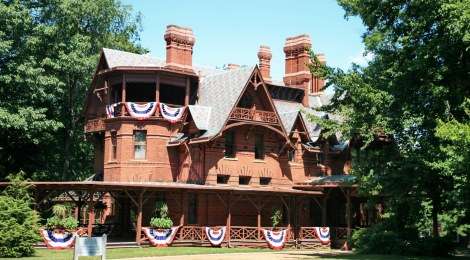
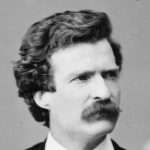
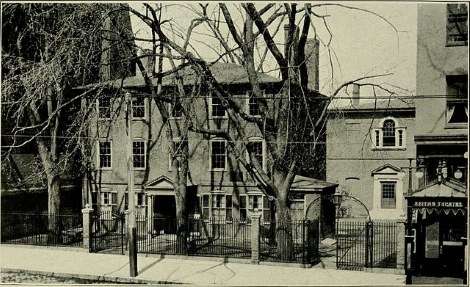
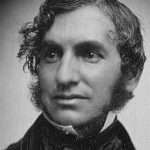
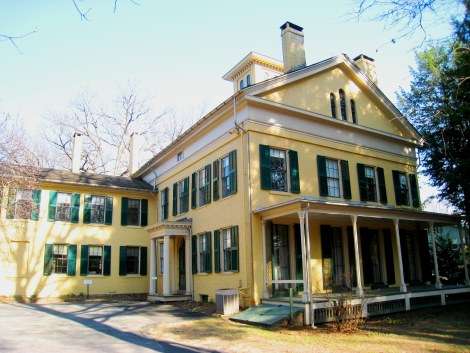
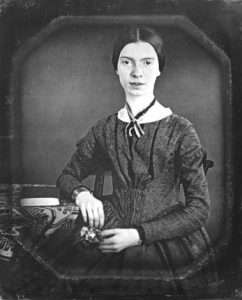
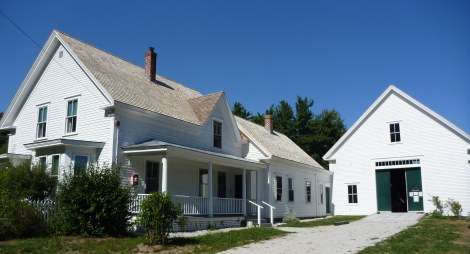
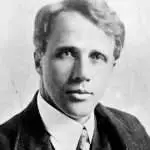
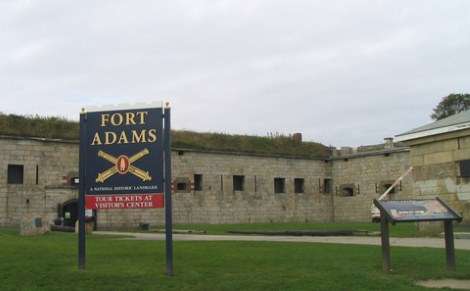
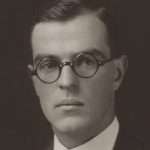

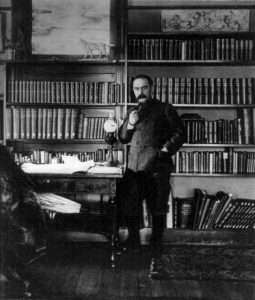

6 comments
Home of Louisa May Alcott “Little Women” in Concord MA.
There are actually several Robert Frost homes in New England. besides the one in Derry New Hampshire, there is Frost’s Stone House in Shaftsbury Vermont, and another, The Frost Place in Franconia, New Hampshire.
This was awesome! Thanks for sharing! I recognized Emily Dickinson’s house right away but wouldn’t have recognized any of the others! 🙂
Really like this article on famous New England authors. Keep these articles coming.
[…] Amistad to Connecticut, so we decided to select Mr. North as Rhode Island’s historic movie set. Thornton Wilder wrote the novel on which the 1988 film is based. Mr. North starred Anthony Edwards, Robert Mitchum […]
[…] Mark Twain left his house in Hartford in 1891 when he suffered financial reverses. He and his family traveled in Europe, where he raised money lecturing and lived more cheaply. He didn’t return to the house after his 24-year-old daughter Susy died because he couldn’t bear the reminders of her. […]
[…] began after they moved to the house they built, called Naulakha. Beatty Balestier lived across the drive. Beatty was big, hearty, open, improvident, impetuous and […]
Comments are closed.